Killaguile House
Houses within 15km of this house
Displaying 30 houses.
Houses within 15km of Killaguile House
Displaying 30 houses.
| House name | Description | |
|---|---|---|
| Castletown | A branch of the Ellison family was living at Castletown in the 1770s and Wilson notes it as the seat of Mr. Ellison in 1786. The sale rental for the D'Arcy estate in the Encumbered Estates' Court in November 1852 refers to a small house on the property, which could be adapted as a fishing or shooting lodge. Lewis Strachan occupied the house at the time of Griffith's Valuation. A few walls of the house still remain. |

|
| Ballycurrin | A house built in 1828 on the shore of Lough Corrib to replace an older one. Wilson refers to the latter as the seat of Henry Lynch in 1786. Held in fee by Charles Lynch at the time of Griffith's Valuation, when it was valued at £18 10s. Slater recorded it as the seat of Charles Lynch in 1894. It was burnt in 1921. In 2007 this house was being renovated and offered for sale. |

|
| Corcullen/Kirkullen House | The house valued at £21 was vacant at the time of Griffith's Valuation. Michael D. Browne was the immediate lessor. It is shown as a considerably enlarged structure on the 25-inch map of the 1890s. Buildings are still extant at the site. | |
| Danesfield | At the time of Griffith's Valuation, George E. Burke was leasing Danesfield to Henry Daly when it was valued at over £23. The house is demolished, however the yard bell holder and the remains of the walled garden are still visible. |
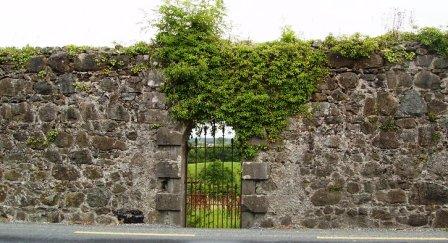
|
| Corrib View | The home of the Doig family in the Oughterard area, occupied by George Cottingham in 1855 who held it from John Doig. The house is now run as a B&B. http://www.galwaybandb.net/ |

|
| Currarevagh | At the time of Griffith's Valuation, Henry Hodgson owned the townland of Currarevagh and occupied the house there, then valued at £5. The existing house was built in the mid 19th century and is still owned by the Hodgson family who run it as a guest house. |

|
| Drimcong | Originally a Lynch home which was sold to the Kilkellys in the early 19th century. Wilson refers to it as the seat of Mr. Lynch in 1786. It was held in fee by James Kilkelly at the time of Griffith's Valuation when it was valued at almost £16. In the late 20th century Drimcong House functioned as a gourmet restaurant, it is now a private residence. |

|
| Ross | In 1786 Wilson refers to Ross as the seat of Mr. Martin, It was held in fee by James Martin at the time of Griffith's Valuation, when it was valued at £20. On the shore of Ross Lake, the childhood home of the author, Violet Florence Martin is now open to the public for part of the year. Home of Claude Chevasse in the 20th century and later restored by the McLaughlin family, who reside there. |

|
| Clareville House | Built in the mid 18th century by Robert Martin of Dangan, it was used as a winter residence by the Martins of Dangan and Ballynahinch Castle. Occupied by Richard Martin at the time of Griffith's Valuation and held from the Law Life Assurance Society when it was valued at £20. Clareville is still extant and occupied. In 2013 it was offered for sale. |
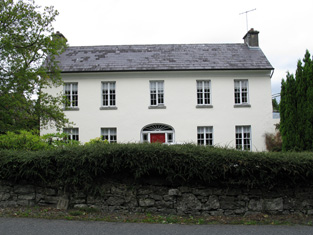
|
| Knockbane | Occupied by Anthony O'Flaherty at the time of Griffith's Valuation and valued at £33. The house no longer exists but extensive farm buildings are still visible. The property is still owned by descendents of Anthony O'Flaherty. |
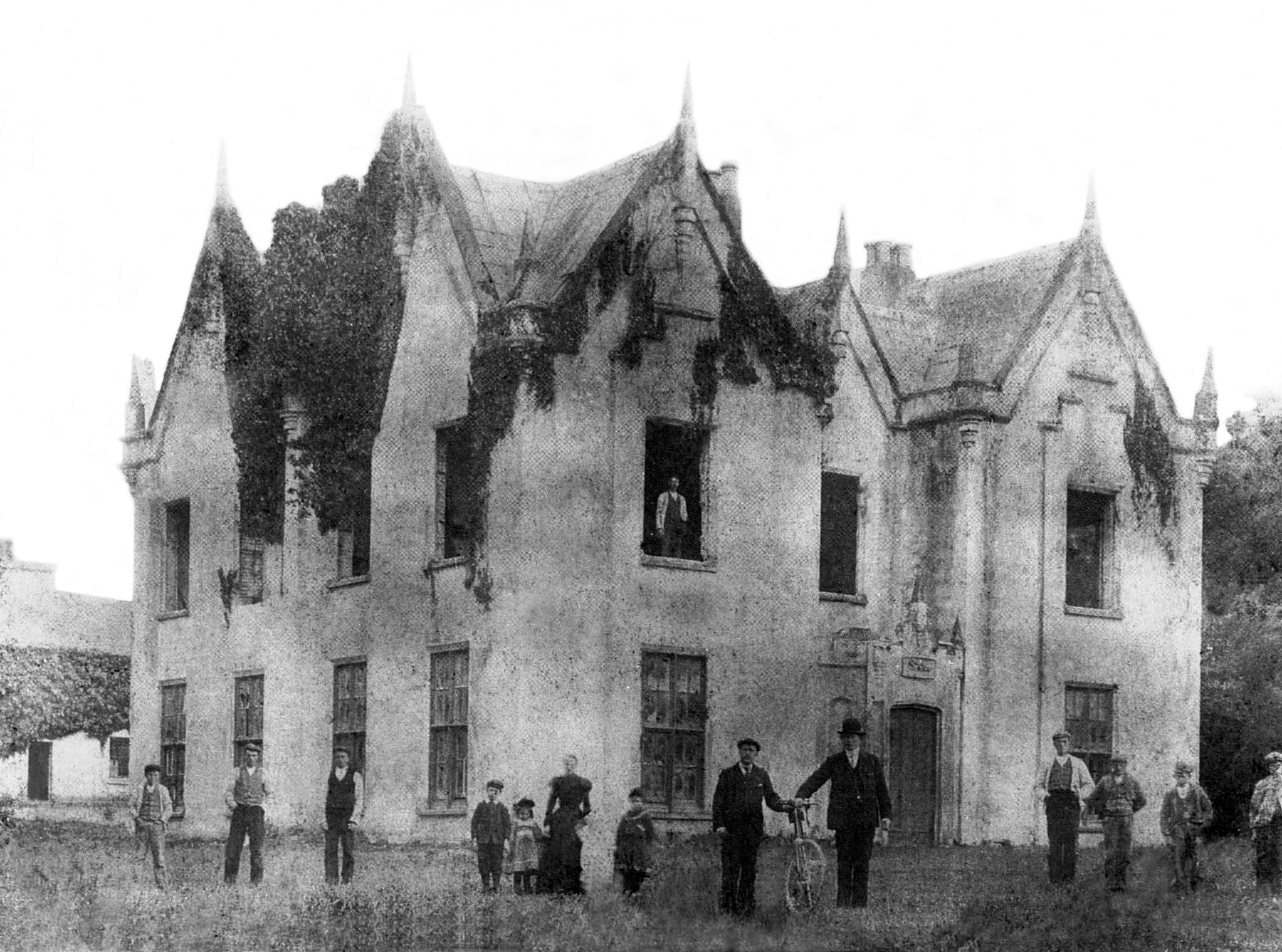
|
| Lemonfield | In 1786 Wilson writes that Lemonfield was the seat of Sir John O'Flaherty. George O'Flahertie was occupying the property at Lemonfield, at the time of Griffith's Valuation when it was valued at £20. The house is no longer extant. |
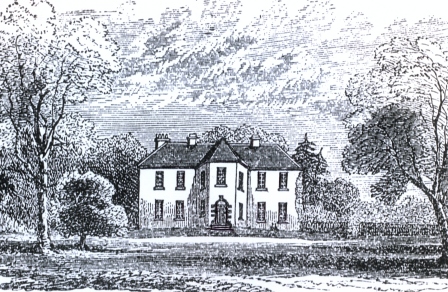
|
| Ardvarna | Occupied by A. Ross in 1837, John Scully at the time of Griffith's Valuation when it was valued at £16 and by Edward Jackson Fitzsimons in the 1860s. There is still an extant house at this site. |
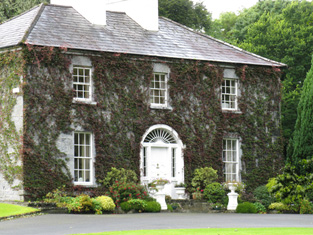
|
| Portacarron | In 1786 Wilson refers to "Portacairn" as the seat of Mr. French. At the time of Griffith's Valuation, there is no house with a substantial valuation in this townland, then in the possession of Marianne Nolan. There is no visible sign of the house now, some walls and parts of the stable yard remain. |
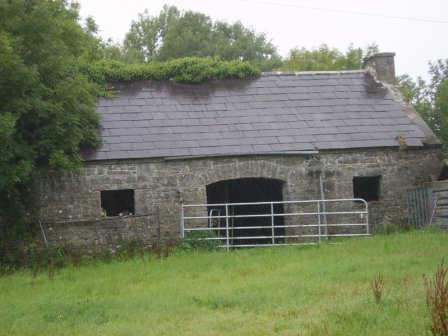
|
| Brownville | This house was originally known as Eyreville and was leased by the Martins to the Eyres in the latter half of the 18th century. Wilson refers to it as the seat of Mr. Eyre in 1786. In 1808 it was sold to James Valentine Browne and the name of the house was changed to Brownville. In the later 19th century it was the home of Dr McCormack, the Bishop of Galway. Portions of the original house may have been incorporated into out-buildings at the rear of the site. | |
| Woodstock | In 1786 Wilson refers to Woodstock as the seat of R. Shaw. The home of Stephen Blake in 1814, it later became the home of the Comyn family. The house was burnt down in June 1877 and never rebuilt. The family mainly resided in France afterwards. | |
| Claran House | The home of the Browne family in the 19th century. It was occupied by Arthur Dillon Browne in the early 20th century. |

|
| Ower | In 1786, Wilson refers to "Aur" as the seat of Mr. Burke. The Ordnance Survey Name Books record John Burke as the owner in the 1830s. At the time of Griffith's Valuation, Joseph Burke held this property in fee when it was valued at £13. It was leased to Colonel Beddington in the 1920s and is now a ruin. |

|
| Letter Lodge | Reputed to have been a hunting lodge of the Martins of Ross, this herd's house was occupied by William Poe in the 1850s, who held the property from James O'Hara. David Walsh was the tenant of Letter in 1890. In the late 20th century the home of Richard Ward, wildlife artist and still a private residence. |

|
| Srue | Occupied by Chris O'Flaherty in 1814 and marked on the first Ordnance Survey map 1838 in a triangle of land near the shore of Lough Corrib. Possibly built as a steward's or agent's house. It was listed as a herd's house by the time of Griffith's Valuation when it was held by the Law Life Assurance Society in fee. Remnants of the garden walls and of the farm buildings still remain. |

|
| Annaghkeen | The castle was in ruins by the late 1830s. | |
| Clydagh | Built in the early 1820s close to the shore of Lough Corrib, a residence of the Lynch Stauntons until the early 20th century and still occupied. IN 1894 Slater noted it as a seat of B. O'Neill Power. |
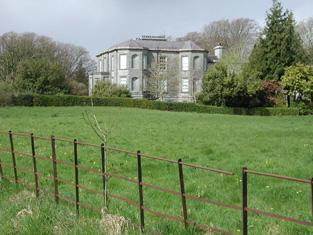
|
| Gortrevagh | A village is marked at Gortrevagh on the first Ordnance Survey map but on the revised edition of 1898-1899 the village is gone and a substanial building is marked instead. This may have been the residence of Edmund O'Flaherty. Some older buildings are included in what is now the golf club complex. | |
| Annaghdown | A house at this site on the First Edition Ordnance map is labelled Annaghdown House. The current house was built in 1868 by the Blake family It is still occupied and well maintained. |

|
| Headford Castle | Richard J. Mansergh St George built Headford Castle in the early 19th century. In 1836 Robert Graham referred to an Elizabethan house 'just built', the architect was George Papworth. At the time of Griffith's Valuation it was held in fee by Richard M. St. George and valued at almost £46. Slater noted it as the seat of Thomas McDonagh in 1894. It burnt down in 1906. |

|
| Moycullen Lodge | Home of the French family in the 18th century. Wilson refers to it as the seat of Mr. French "situated on the side of a small lake". The Ordnance Survey Name Books mention it as the residence of Peter Lynch in the 1830s. It was leased by James Darcy or Thomas Fitzgerald from Lord Campbell's estate at the time of Griffith's Valuation when it was valued at £1+. A more substantial house was afterwards constructed at the site and is labelled Moycullen Lodge on the 25-inch map of the 1890s. It is no longer extant. | |
| Ballynalacka Lodge | In the sale rental of 1852 there is reference to the erection of a shooting lodge at Ballynalacka by the 'late proprietor' and a building named Ballynalacka Lodge appears in this townland on the 1st edition Ordnance Survey Map. It is labelled as "in ruins" on the 25-inch Ordnance Survey map of the 1890s. | |
| Woodpark | Described in the sale rental of 1879 as "a good house, with stables, a walled garden, walled orchard and a park around the house which stands on an elevated site affording a fine view of lake scenery". Peter Newell was occupying the house, then valued at £4, at the time of Griffith's Valuation. It is now a ruin. |

|
| Carrownacroagh | Home of William Skerrett in the 1830s. By the time of Griffith's Valuation, the townland was in the possession of Dominick O'Flaherty but there was no house with a valuation greater than £2. |
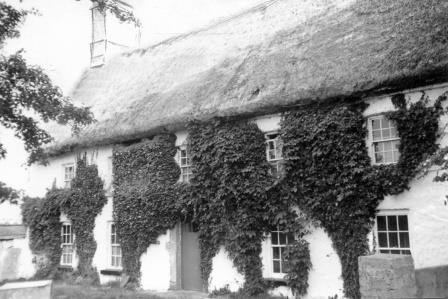
|
| Fermoyle Lodge | Built in 1875 by the Berridge family as a shooting lodge. It has since served as a guest accommodation and an art gallery and has been offered for sale on a number of occasions. |

|
| Gortdrishagh House | The National Inventory of Architectural Heritage indicates that this house was built in the latter part of the nineteenth century. At the time of Griffith's Valuation, James O'Connor was leasing offices and land at Gortdrishagh from the Law Life Assurance Company. |
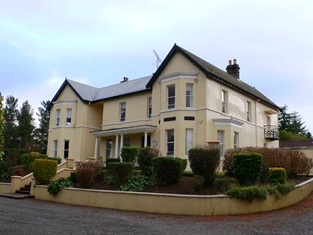
|

